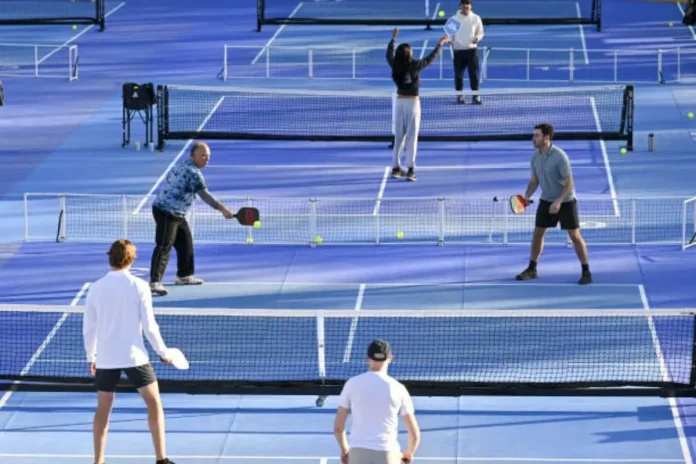Master the Pickleball Transition Zone: A new pickleball drill is helping players improve their reset shots by training them in the transition zone—an area between the baseline and kitchen line. The drill, designed for two to four players, uses split steps and real-game movement to sharpen responses during attacks.
A Zone That Separates Good from Great
In pickleball, the area between the baseline and the kitchen is often called “no man’s land.” But it’s also where great players pull ahead. Known now as the “land of opportunity,” this zone is key for mastering resets.
This drill is designed to give players more time and space to reset during fast attacks. It helps them react to opponent shots and slow the ball down with control.
Players need a paddle, a few balls, and a court to begin. The drill has four progressions, starting with a simple catching task and building to full-speed rallies.
First Progression: Catch and Cradle
Player A and Player B face each other at the kitchen line. Player A, the focus player, throws a high ball into the kitchen and takes a backwards split step.
Player B hits a mid-speed shot back. Player A’s goal is to catch it with both hands. This builds feel and control. The drill repeats until Player A catches five balls in a row. The goal is to absorb the shot softly by cradling the ball close to the body.
Second Progression: Block Volleys with Paddles
In this step, both players use paddles. Player A again tosses a high ball and prepares with a backward split step. Player B attacks the ball at its peak.
Player A must then block and reset the shot. The drill continues until Player A completes five successful resets in a row.
Third Progression: Live Rally Situations
A third player, Player C, joins. Player C hits dinks cross-court to Player B, while Player A observes.
When Player C gives a high ball, Player A takes a split step and resets the attack. This teaches Player A to recognize attackable balls during play.
Player C should vary shots to both sides of Player B to keep it realistic. Most attacks happen on the forehand side, so variation adds challenge.
Fourth Progression: Team Attack and Defense
With four players, the drill becomes a team-based figure-eight rally. Team A hits cross-court dinks, and Team B hits down the line.
Only Team B is allowed to attack. Team A works against each other—either player can pop up a ball for Team B to attack.
Before doing this, players should call out “reset” as a warning. After a successful reset, normal play resumes.
Keys to Success
To get the most out of this drill, three things matter:
Use firm grip pressure, a strong wrist, low stance, and close-body contact.
Make the dinks harder to return over time to build reception skills.
Start slow, then build speed to match real-game pressure.
“Having the physical skills to reset the ball well is certainly important, but it’s not as important as sensing when you need to prepare for an attack,” the guide explains.
“Today’s drill not only lets you practice the technique but most importantly puts that shot in the context of a rally so that you can start practicing with real purpose.” – (guide)
Why It Matters
The ability to move backward and reset is just as valuable as moving forward to attack. This drill gives players the chance to learn when and how to reset, improving overall court awareness and control.
As pickleball grows in popularity, these types of training drills help players raise their level and better compete during fast-paced games.
News in Brief: Master the Pickleball Transition Zone
A new drill helps pickleball players improve resets in the transition zone. Using step-by-step progressions, players learn to absorb attacks and respond with control. The drill ends with a team rally that simulates real play, teaching timing, technique, and awareness—all key for becoming a better all-around player.
ALSO READ: Mastering Pickleball: When to Take the Shot vs. Let It Bounce at the NVZ Line


